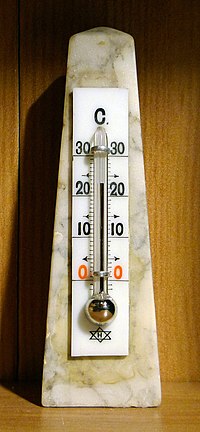
Photo from wikipedia
Ambient and indoor temperature affects thermal comfort and human health. In a changing climate with a predicted change in temperature extremes, understanding indoor temperatures, both hot and cold, of different… Click to show full abstract
Ambient and indoor temperature affects thermal comfort and human health. In a changing climate with a predicted change in temperature extremes, understanding indoor temperatures, both hot and cold, of different housing types is important. This study aimed to assess the hourly, daily and monthly variation in indoor temperatures in different housing types, namely formal houses, informal houses, flats, government-built low-cost houses and old, apartheid era low-cost housing, in five impoverished urban communities in Johannesburg, South Africa. During the cross-sectional survey of the Health, Environment and Development study data loggers were installed in 100 homes (20 per suburb) from February to May 2014. Indoor temperature and relative humidity were recorded on an hourly basis. Ambient outdoor temperatures were obtained from the nearest weather station. Indoor and outdoor temperature and relative humidity levels were compared; and an inter-comparison between the different housing types were also made. Apparent temperature was calculated to assess indoor thermal comfort. Data from 59 retrieved loggers showed a significant difference in monthly mean indoor temperature between the five different housing types (p < 0.0001). Low cost government-built houses and informal settlement houses had the greatest variation in temperature and experienced temperatures between 4 and 5 °C warmer than outdoor temperatures. Housing types occupied by poor communities experienced indoor temperature fluctuations often greater than that observed for ambient temperatures. Families living in government-built low-cost and informally-constructed homes are the most at risk for indoor temperature extremes. These types of housing should be prioritised for interventions aimed at assisting families to cope with extreme temperatures, gaining optimal thermal comfort and preventing temperature-related health effects.
Journal Title: International Journal of Environmental Research and Public Health
Year Published: 2017
Link to full text (if available)
Share on Social Media: Sign Up to like & get
recommendations!